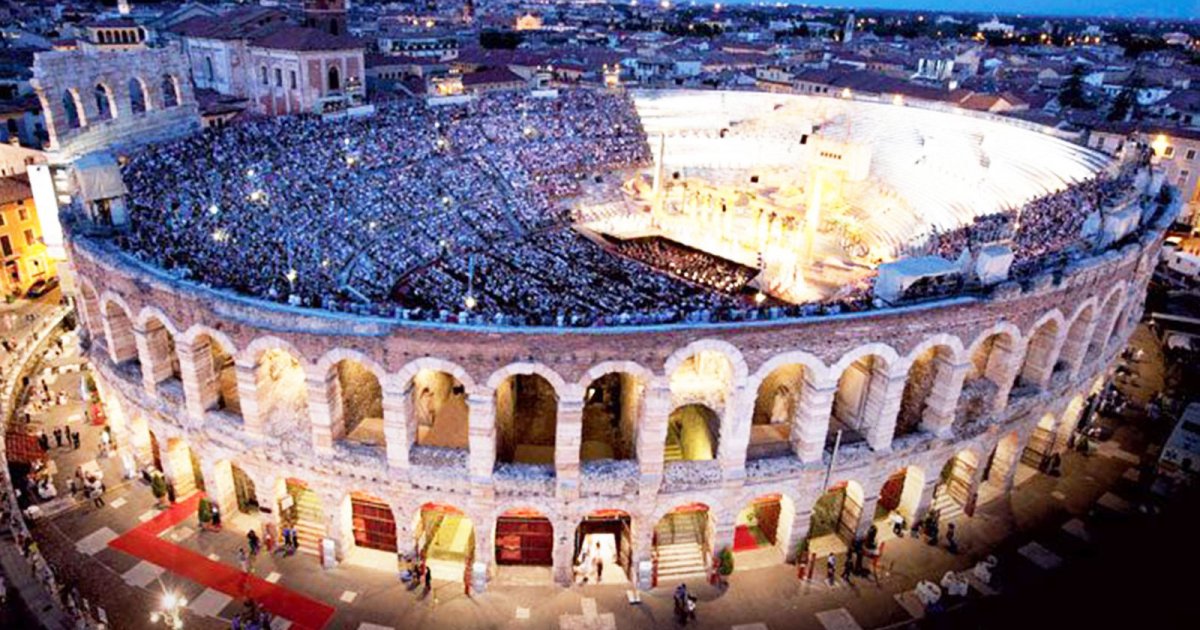ARENA, Arena
 Language: English / USA
Language: English / USA
Hi, my name’s Jill, and I’m your personal guide. Along with MyWoWo, I’d like to welcome you to one of the Wonders of the World: the Verona Arena.
I’m about to tell you about the most magnificent archeological monument in the whole of northern Italy!
There are few cities in the world like Verona that can boast such a spectacular entrance to the Old Town.
The usual access is through the double arch known as “Portoni di Bra”, a remnant of the ring of city walls built at the end of the 14th century.
Once you walk through the arch, you’ll find yourself in a huge triangular piazza, partly planted with trees and surrounded all the way around by monumental buildings from a variety of historical periods. One side – the left as you enter – features a series of appealing restaurants and bars, with outdoor areas facing onto the “liston”, a broad sidewalk created in the 18th century with slabs of fine red marble from the mountains around Verona which contain a large number of spiral-shaped fossilized shells.
In the center of the piazza, like a giant stone ship, stands the Arena, featuring a succession of 72 imposing stone arches. It dates to the first century AD, and it is the third-largest Roman amphitheater that has survived to this day. The elliptical-shaped construction measures 110 meters by 140 meters, and it was originally even bigger: of the external structure, with three orders of arches, just one “wing” remains.
The rest collapsed following an earthquake in 1183, providing a large amount of construction material to build the churches and Romanesque buildings!
The entire interior is superbly preserved. There are 44 rows of seats, giving the Arena a capacity of 22,000 spectators!
The orchestra has been restored, and since 1913 has been used for staging performances and operas during the summer: the pièce de résistance of the season is the performance of Aida, the famous opera by Verdi set in ancient Egypt.
Let me leave you with an interesting fact: the term “arena” derives from ”harena”, the sand used in the center of the monument to cover the area where gladiators and animals fought, with the purpose of soaking up the blood.



